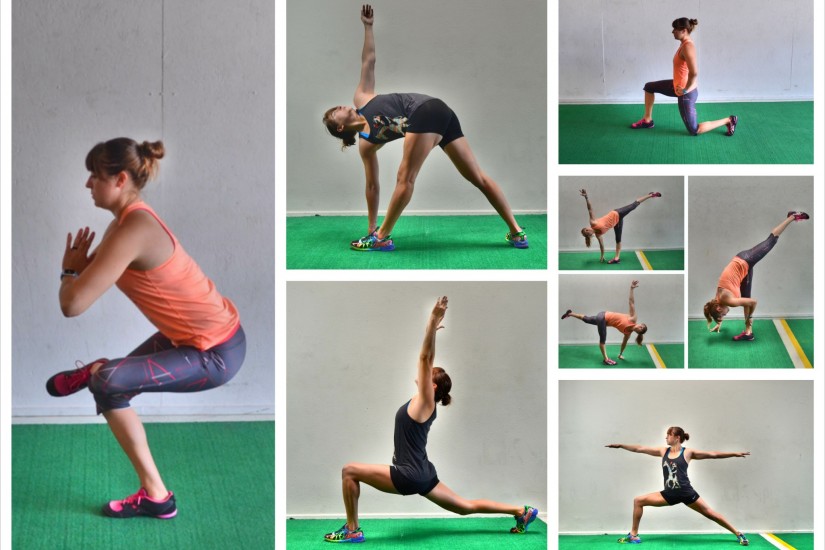Most people tend to lift heavy weights as often as possible when trying to increase their strength and muscles. Other people might include some cardiovascular workouts to develop their endurance, sprints to work on explosive power, or low intensity workouts to get rid of fat.
One piece that’s missing from many workouts is quite possibly one of the most important things – stretching.
A lot of men believe that stretching isn’t an integral part of a workout due to the fact that it’s low intensity. What they don’t know however, is that besides being a good part of warming up and cooling down, it’s something that can also improve your strength.
Benefits from Stretching
Improving your strength
You should be adding stretches to your regimen because you’ll be able to train a wider range of motions. This will help you out when you’re weight lifting, which in turn will help improve your muscle strength. When your lifting exercises use a greater range of movement, they use more muscle fibers, which will make your body stronger.
Another benefit of stretching is to decrease Delayed Onset Muscle Soreness (DOMS). This way, you won’t feel so sore after the workout, and you’ll be able to get back into the gym sooner to do more workouts!
Enhance your Daily Performance
Stretching isn’t only beneficial for gym purposes; it’s also beneficial for your regular life too. For example, some people have stiff and rigid bodies, so there’s a greater chance that they can have joint pains in the later years of their lives. Compared to people who are limber and stretch often, they won’t be able to function as well.
Stretching is also important for sports; agility is necessary to move around quickly or to dodge an opponent, and stretching is something that will boost your fitness.
Active and Passive Stretching
There are two different kinds of stretching: active (aka “dynamic”) and passive. Both of them are different and will benefit you in different ways. To get the most out of your workouts, you should use both of them.
Active Stretching
Active stretching is accomplished when resistance is applied, so that your muscle fibers are working from the tension. After you keep the tension for 10-20 seconds, you can relax your muscle and have a partner push the part of your body that needs to be stretched… this will improve your range of motion. Then, you can relax your muscles again, and after it’s been relaxed, this will allow you to stretch even more.
One of the most popular active stretches is the hamstring stretch.
For a hamstring stretch, lay down on your back. Lift up one leg and get it as close as you can to a 90 degree angle (depending on your flexibility, you may be above or below a 90 degree angle). Once you’re at your most comfortable position, have your partner slowly push your leg towards your upper body to increase your angle.
Once your partner has pushed your leg as far as possible, keep it in that position for about 10-20 seconds. Then relax, and let your partner repeat the process… you’ll see that your legs have become a bit more flexible after you relaxed! Keep repeating this for about 2 more times, and then do exercise with the other leg.
Passive Stretching
You can do passive stretches on your own, preferably on a soft floor (or mat).
When you do passive stretching, be sure that your muscles have already been warmed up (due to the fact that cold muscles can tear). There are various positions you can use, and you should experience a mild stretch feeling on your muscles; it shouldn’t be a strong painful feeling! If it’s painful, that just means that you’re trying to stretch too much or that you’ve got the wrong positioning. With each passive stretch, you should try and hold your position for 15-20 seconds.
Lower-body stretches:
– Hamstring stretch: While sitting on the ground with your feet positioned in front of you, reach towards your toes with your hands.
– Quads stretch: While standing, bend one leg behind you and grab it. Pull on your foot until you feel a stretch in your quads.
Upper body stretches:
– Shoulder stretch: Move one arm across the chest, and then pull on it using your other hand.
– Triceps stretch: Bring one arm over your head and have it bend at the elbow towards your back. With the other hand, push down on the elbow.
– Side bend: Standing with your feet at shoulder-width, bend over to one side. Repeat on the other side.
Try to do each of these stretching exercises at least 1-2 times during a workout.
If you’re running to hit the showers after each of your workout sessions, you could be missing out on a lot of strength building potential. If you don’t stretch, not only are you going to get muscle soreness, but you might also experience joint pain and other problems when you grow older!
Remember to do passive and active stretches when you’re finished with your workouts. Stretch as much as you can while remaining comfortable. You’ll see that in no time, your weight lifting workouts will feel easier, you’ll be more dexterous in sports, and your everyday life may be a bit easier.




